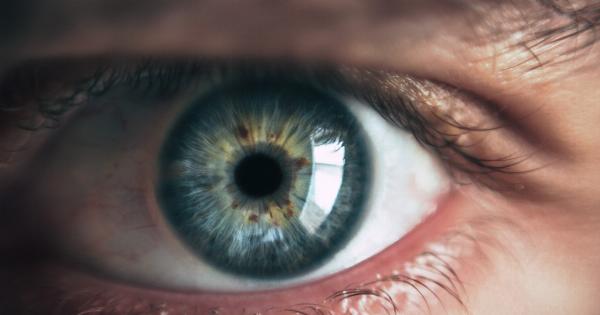Glaucoma is a serious eye condition that can cause permanent vision loss. According to the World Health Organization (WHO), it is the second leading cause of blindness worldwide.
Unfortunately, glaucoma can often go unnoticed until it is in an advanced stage. This is why it is often called the “silent thief of sight”. But there are signs and symptoms that you can watch out for to catch glaucoma early and prevent vision loss. In this article, we will discuss these signs in detail.
What is Glaucoma?
Glaucoma is a group of eye diseases that damage the optic nerve. The optic nerve is responsible for carrying images from the eye to the brain. When it is damaged, it can cause vision loss.
Glaucoma is usually caused by high pressure inside the eye, called intraocular pressure (IOP). However, it can also occur in individuals with normal IOP.
Who is at Risk for Glaucoma?
Anyone can develop glaucoma, but there are some factors that can increase your risk:.
- Age: The risk of glaucoma increases with age, especially after 40 years old
- Race: African Americans, Hispanics/Latinx, and Asians are at a higher risk for glaucoma than Caucasians
- Family history: If someone in your family has glaucoma, you are at a higher risk of developing the condition
- Medical conditions: Certain medical conditions like diabetes, high blood pressure, and heart disease can increase your risk of glaucoma
- Eye injury or surgery: A previous eye injury or surgery can increase your risk of glaucoma
- Prolonged use of corticosteroids: Long-term use of corticosteroid medications can increase your risk of glaucoma
Types of Glaucoma
There are several types of glaucoma:.
- Primary open-angle glaucoma: This is the most common type of glaucoma. It usually develops slowly over time and can cause gradual vision loss without any noticeable symptoms in the early stages.
- Angle-closure glaucoma: This type of glaucoma occurs when the drainage angle of the eye becomes blocked or closed, causing rapid pressure buildup and sudden severe symptoms.
- Normal-tension glaucoma: This type of glaucoma occurs when there is optic nerve damage and visual field loss despite normal IOP.
- Secondary glaucoma: This type of glaucoma is caused by other eye conditions like uveitis, cataracts, or tumors.
Signs and Symptoms of Glaucoma
As mentioned earlier, glaucoma is often called the “silent thief of sight” because it can cause permanent vision loss without any noticeable symptoms in the early stages.
However, as the disease progresses, you may start to experience some of these signs and symptoms:.
- Gradual loss of peripheral vision
- Tunnel vision
- Blind spots in your visual field
- Difficulty adjusting to low light conditions
- Halos around lights
- Headaches or eye pain
If you experience any of these symptoms, it is important to see an eye doctor as soon as possible. Only a comprehensive eye exam can determine if you have glaucoma.
Diagnosis and Treatment of Glaucoma
If you are diagnosed with glaucoma, your eye doctor will work with you to develop a treatment plan. Treatment for glaucoma usually includes prescription eye drops, oral medications, or surgery to lower the IOP.
The goal of treatment is to slow down or prevent further vision loss. Unfortunately, any vision loss that has occurred is permanent and cannot be regained, so early detection and treatment is crucial to preserve remaining vision.
Regular eye exams are important to monitor the progression of glaucoma and adjust treatment as necessary.
Prevention of Glaucoma
While there is no guarantee that you can prevent glaucoma, there are some steps you can take to reduce your risk:.
- Get regular comprehensive eye exams: Regular eye exams can catch glaucoma early before vision loss occurs.
- Know your family history: If someone in your family has glaucoma, you are at a higher risk, so make sure to tell your eye doctor.
- Exercise regularly and maintain a healthy diet: Exercise and a healthy diet can help to maintain a healthy weight, which can in turn reduce your risk of glaucoma.
- Protect your eyes from injury: Wear safety glasses when participating in sports or doing other activities that could cause eye injury.
- Follow your doctor’s instructions: If you are diagnosed with glaucoma, it is important to follow your doctor’s instructions carefully to prevent further vision loss.
Conclusion
Glaucoma is a serious eye condition that can cause permanent vision loss. It often goes unnoticed until it is in an advanced stage, which is why it is often called the “silent thief of sight”.
However, there are signs and symptoms that you can watch out for to catch glaucoma early and prevent vision loss. Regular comprehensive eye exams are also important to catch glaucoma early. If you think you may have glaucoma or are at risk of developing the condition, talk to your eye doctor to develop a plan to monitor and treat the disease.


























